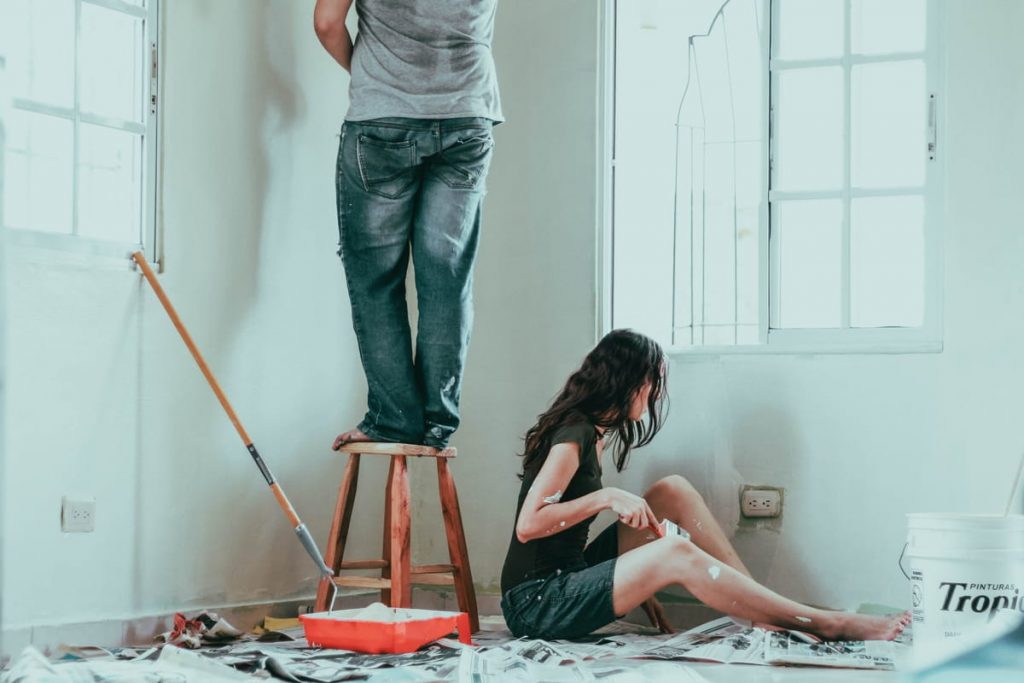Painting your house is both satisfying and overwhelming, but these hacks will guide you through the process. It’s a task that can take a lot of time, money, and effort—but it doesn’t have to be that way. The right tools, a few smart tools and tricks, and some tips from professionals will help you get the job done in no time at all.

Clean walls before painting
Get rid of any dust, dirt or grease by washing the walls with soap and water. Use a sponge to get into corners and crevices, then wash off the degreaser with a damp cloth. If there are stubborn marks on your walls that won’t come off no matter how much scrubbing you do, try using a little bit of bleach in place of shampoo–it might help loosen up whatever is stuck on there!
Use a primer for a flawless finish
The first step in any paint job is to prime the walls. If you don’t prime your walls, then the paint will come off much more easily and quickly than if you’d primed it first—and primer is a necessary step in painting a wall. Primer helps improve both the look of your finished product and its durability.
It’s important to know what kind of primer you should use for your project because different primers serve different purposes:
Latex or oil-based primer will stick well on smooth surfaces like woodwork, metal, plastic and glass that don’t need much adhesion capability (like windows). This is because these primers have fewer solvents that evaporate when dry than other types do. They also tend not to yellow over time, as some water-based versions can do after prolonged exposure to light sources.
Don’t dip your brush too far into the paint can
When you dip your brush into the paint, don’t dip it too far in, or else the bristles will become saturated with paint and won’t be able to retain as much as they should. This causes a few problems: first, if you’re using a roller, then it can make it more difficult when rolling out your coverage on the wall; second, if you use a brush, then there’s no way to get rid of excess paint after applying it to your hand and/or paper towels (which will ultimately waste money).
Use a scissor lift for more safety
If you’re painting high up on the side of your house and want to avoid having to climb up and down ladders, get a scissor lift! They’re so much safer than ladders and will make your painting job much easier. You don’t want to climb up ladders or scaffolding just to paint a few walls. Consider a rental professional scissor lift in order to reach critical places without much effort. This will not only save your time but also ensure that you don’t fall from the ladder and get injured.
Choose the right paint
If you want to paint your house, you should keep a few things in mind. The most important thing is to make sure that you have the right type of paint for the job. You need to consider what sort of surface it needs to be applied to and how much time it’ll be out in the elements (you probably don’t want an oil-based enamel on a surface that’s going to get rained on). Take into consideration if there are any special conditions where your house may be located: like whether or not it gets lots of sunlight, if there’s a lot of wind or if you live near sea level where there’s more moisture in the air. It also worth mentioning that, with the right color you can make your small apartment look bigger.
Use a quality brush or roller
Painting your house is no small feat. It’s also not cheap, so it pays to use the best tools possible.
While you can use a decent brush or roller for most of your painting needs when it comes time to paint trim or do detail work, invest in a quality brush or roller. Cheap brushes and rollers will have bristles that fall out easily and won’t hold their shape. Using the wrong kind of paintbrush or roller can ruin your project by leaving behind streaks, drips and other imperfections on the walls or ceiling.
So what are some things you should look for in a good brush? Look for ones with stiff bristles so they don’t bend while you’re using them; this makes them easier to control as well as less likely to tear off any loose bits of drywall when brushing against it (which could lead to an unwanted mess). You also want something with a firm handle (like wood) so that it doesn’t bend under pressure when pushing through thick layers of old wallpaper paste residue during prep work–or worse yet–during actual application!
Buying better tools may seem expensive at first glance but think about how much money would be wasted if you had to buy four cheap brushes just because one broke due to poor quality materials used during the manufacturing process. Not only that, but imagine how much more waste material goes into landfill every year due to poor choices made by consumers who didn’t know any better!
Remove doors and windows beforehand
It’s always better to remove doors and windows before painting so that you won’t have to do it later when it becomes difficult because of paint sticking on them. You can also use cardboard or newspapers as padding between these objects and the walls when taking them off so that they won’t get scratched or damaged by nails or screws sticking out from the walls before the painting starts. Apply these tips to paint your house in the most efficient way.